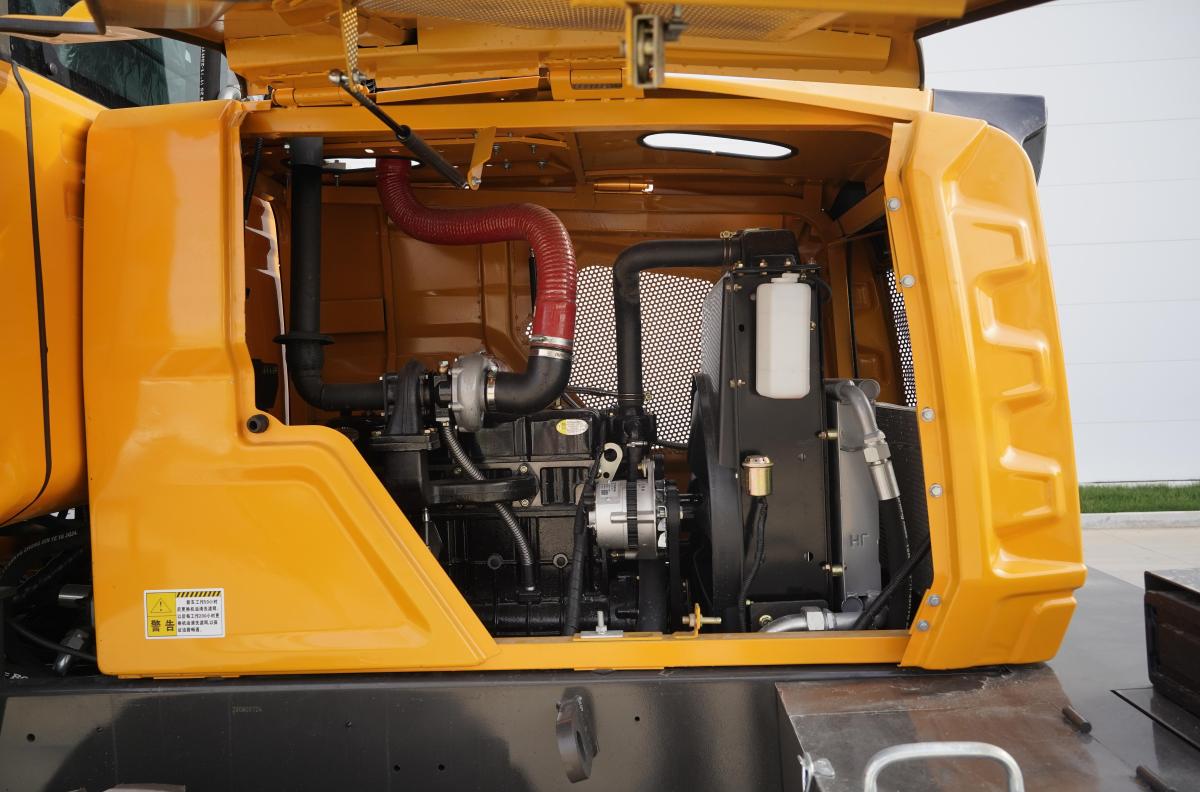Spending 5-10 minutes each day on these key checks can prevent most major repairs and keep your machine running reliably.

Part 1: Before Starting (Walk-Around Inspection)
Do this with the engine OFF and the machine parked on level ground.
1. Look for Leaks & Damage: Walk around the loader. Look on the ground and around the engine for any fresh puddles or streaks of oil, fuel, or coolant. Check hoses and belts for cracks or damage.
2. Check for Debris: Look at the radiator and oil cooler fins (usually behind the cab). Remove any leaves, dirt, or straw blocking them. A clean radiator prevents overheating.
3. Check Tire Pressure & Condition: Give the tires a quick glance. Ensure they look properly inflated and check for cuts, bulges, or embedded objects like rocks or nails.
Part 2: Check Fluid Levels (Engine OFF)



4. Engine Oil:
Find the dipstick, pull it out, and wipe it clean.
Push it all the way back in, then pull it out again.
The oil level should be between the MIN and MAX marks. Do not overfill.
5. Coolant:
Find the translucent plastic overflow tank (usually has a blue or black cap).
Check that the coolant level is between the "FULL" (or "MAX") and "LOW" (or "MIN") lines.
WARNING: Never open the main radiator cap when the engine is hot!
6. Hydraulic Fluid:
Locate the hydraulic tank. It may have a sight glass or a dipstick.
Check that the level is within the normal range.
7. Diesel Fuel:
Check the fuel gauge. It's a good habit to refuel at the end of the day to prevent water condensation inside the tank overnight.
Part 3: The Most Important Task - Greasing!
8. Grease All Fittings (Zerk Fittings):
This is the #1 task to prevent expensive wear and tear.
Use a grease gun on every single grease fitting you can find: bucket linkages, loader arms, pivot pins, and steering cylinders.
Grease until you see fresh, clean grease squeeze out around the pin. This pushes out dirt and old grease.
Part 4: After Starting (Quick Operational Check)
9. Start the Engine and let it idle for a few minutes.
10. Listen for Strange Noises: Listen for any unusual knocks, squeals, or rattles.
11. Watch the Gauges: Look at the instrument panel:
Oil Pressure: Should quickly rise to normal and stay there.
Water Temperature: Should slowly rise and settle in the green (normal) zone.
Warning Lights: All warning lights (like the battery light) should turn off after startup.
Quick Summary Cheat Sheet
Welcome to contact us by leaving a message. We will get in touch with you as soon as we receive your message
